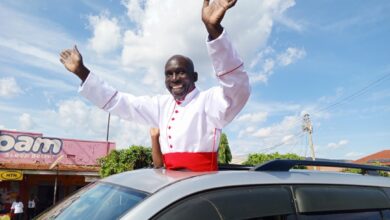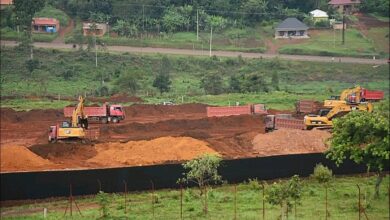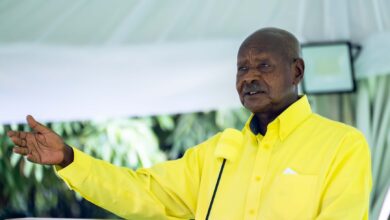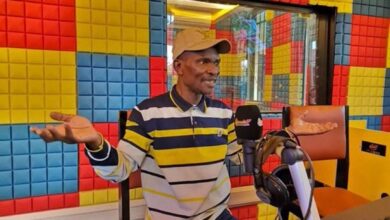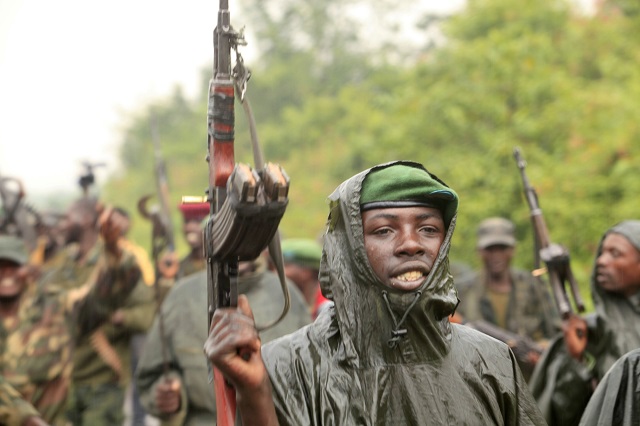
By Agencies
Goma: Emile Bolingo is not sure how long he and other residents of Goma, in the east of the Democratic Republic of the Congo, can hold out.
This major city in the region, with about two million people, has been cut off from the farms that feed it for several days.
It is the latest episode in a resurgence of fighting that has seen tens of thousands added to the nearly seven million who have been forced from their homes in the country because of multiple conflicts.
Rebels from the ethnic Tutsi-led M23 movement are blocking the two main roads into Goma from the north and the west and preventing produce from getting through.
“We are scared of going hungry if the [Congolese army] does not liberate any of the main roads very soon. You can feel the panic here. People are very scared,” Mr. Bolingo told the BBC.
Goma’s population has swelled in recent days, with people running from the advancing fighters.
Mundeke Kandundao, a motorbike taxi rider, has just undergone surgery after a bomb blast.
Sake, a town 25km (15 miles) north-west of Goma, came under attack on Wednesday.
“I sustained a pelvic injury caused by shrapnel,” Mundeke Kandundao told the BBC from his hospital bed in Goma, where he has undergone surgery.
The 25-year-old motorbike taxi driver said a shell was launched by the rebels from a hill overlooking the town on Wednesday.
“I was standing behind a cabin, and there were a lot of other people there, and that’s where it exploded,” he said.
“We are scared because, as you know, the war goes on and on; it is meaningless. We are waiting to see if it ends so that we can go back to our homes.”
Laurent Cresci, from the International Committee of the Red Cross (ICRC), told the BBC from the state-run Bethsaida Hospital in Goma that patient numbers had surged on Wednesday: “It was really a mass casualty. We had 80 patients in our ward before, and now we have 130 patients, so it’s really hard to manage.”
For many people, it is a tragic case of déjà vu.
“For how long shall we live like this? Every now and then we keep fleeing,” Pascal Bashali told the BBC after he had arrived in Goma. People are streaming in by foot, on motorbikes, and on minibuses.
Aline Ombeni said she was distraught on her arrival in the city: “We have fled empty-handed just as you are seeing us—no food, no clothes; we need help with shelter and food.”
M23 fighters are well equipped, but the group denies being a Rwandan proxy.
As the conflict edges closer, it brings back memories of 2012, when the rebels occupied the lakeside city for 10 days before abandoning it following international pressure.
The M23, formed as an offshoot of another rebel group, began operating in 2012 ostensibly to protect the Tutsi population in the east of DR Congo, which had long complained of persecution and discrimination. UN experts have said that the group is backed by neighboring Rwanda, which is also led by Tutsis, something that Kigali has consistently denied.
“We all know that the reason for this war is economic. Rwanda is continuing… for the past 25 years… looting our mineral resources,” Congolese Communications Minister Patrick Muyaya told the BBC, urging the UK to use its influence with Rwanda to ease the situation.
There are now fears that the M23, by far the most organized, disciplined, and well-equipped of the many militia groups in the region, could capture Goma once again.
Recently re-elected Congolese President Félix Tshisekedi said last year that “Congolese need to learn to trust us; Goma will never fall.” He repeated the promise in the city itself during the election campaign in December.
Within reach of major mining towns supplying metals and minerals in high demand, such as gold, tin, and coltan, Goma has become a vital economic hub. Its road and air transport links, and the fact that it has a huge UN peacekeeping base, have attracted a host of businesses, international organizations, and diplomatic consulates.
As such, Goma is a valuable strategic target, but the M23 says it does not want to capture it and maintains it is on the defensive, not offensive.
“If you see the military power of the M23, they could take Goma if they wanted to, but this could bring them many problems,” said Onesphore Sematumba, a DR Congo analyst at the International Crisis Group think tank.
The rebels may just be displaying their capabilities and also thinking back to 2012 and the international opprobrium that followed the seizing of Goma then.
In the aftermath of its withdrawal, it suffered a series of heavy defeats at the hands of the Congolese army, backed by a multinational force that saw it expelled from the country. M23 fighters then agreed to be re-integrated into the army in return for promises that Tutsis would be protected.
But, in 2021, the group took up arms again, saying the promises had been broken.
It emerged from the mountain forests on the border between DR Congo, Rwanda, and Uganda and edged closer to Goma, taking swathes of territory.
Ceasefires have been agreed upon, but these have all broken down, with the government and the M23 blaming each other.
The M23 has repeatedly said it still wants peace negotiations with Kinshasa.
“We asked for dialogue to resolve this problem peacefully,” M23 spokesman Lawrence Kanyuka told the BBC. “Many cycles of war… don’t resolve the root causes of conflict. The Congolese government itself doesn’t want that; it wants to go on a war and kill people even more.”
President Tshisekedi has said talks are “out of question.”.
“One thing that must be clear is that we, as a government, will never negotiate with M23. M23 doesn’t exist. It’s Rwanda acting with its puppet,” his communications minister told the BBC.
Hundreds of thousands of people have already fled their villages to live in makeshift camps; some are on the move again.
Last year, an East African force, which was in DR Congo to help protect civilians and secure areas that armed groups had withdrawn from, left the country at the government’s request.
Its departure in December was followed by the end of the latest ceasefire and the recent upsurge in activity by the M23.
President Tshisekedi hopes that a southern African force that recently arrived in its place will have more success as it has a mandate to attack rebel groups.
He has also asked the large UN force in the country, known as Monusco, to leave. It has become increasingly unpopular for its failure to end the conflict during its 25-year deployment.
But there are concerns that the conflict could get even worse after the Congolese president threatened in December to declare war on Rwanda if the rebels attacked again.
In an apparent reply to the remarks, Rwanda’s President Paul Kagame said in January that in defending his country, “we will fight like people who have nothing to lose.”.
Meanwhile, Natàlia Torrent, from the medical charity Médecins Sans Frontières (MSF), has warned that the intensification of fighting in “different areas and on different fronts” since mid-January is having a devastating effect on an already vulnerable population.
“We are in an area that has already been prone to the spread of different epidemics. We have already been working in the last year on cholera or measles, and we are afraid… [a] new wave of epidemics is going to surge again,” she told the BBC.
Reflecting on the fighting, Goma resident Mr. Bolingo added, “We are the ones who suffer.”
Mr. Bashali, who fled from Sake with his wife and nine children, agreed: “Men are dying, children are dying, women are dying, and those fighting are dying. What for? We are praying that our country will be peaceful.”
Do you have a story about your community or an opinion to share with us? Email us at theugreports@gmail.com.


